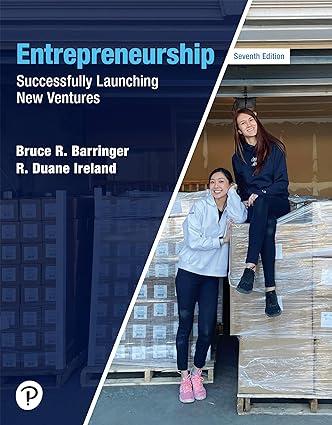One challenge that businesses confront is cutting costs in ways that do not erode their competitiveness. Many
Question:
One challenge that businesses confront is cutting costs in ways that do not erode their competitiveness. Many cost-cutting techniques, such as scaling back on hiring, lowering marketing expenses, or reducing inventory, may save money but may also decrease a business’s chances of remaining competitive. Joining or organizing a buying group is one technique that can help to conserve a product-based business’s financial assets without adverse side effects. A buying group, or buying co-op, is a partnership that bands small businesses and startups together to attain volume discounts on products and services. An example is Intercounty Appliance Corporation, a buying organization for 120 local dealers with 200+ storefronts in the Northeast, from Boston to Philadelphia. The organization aggregates the purchasing power of its members to obtain volume discounts on home appliances and consumer electronics. It also provides members with warehousing solutions, guided merchandising, comprehensive marketing programs, cutting-edge technology, and more. A similar buying group is ADO, a group serving eye care professionals. ADO Buying Group has relationships with many vendors to obtain discount prices on glasses, contacts, and other supplies for members. An example of a much larger buying co-op is the Independent Pharmacy Cooperative (IPC), which is a group purchasing organization and secondary pharmaceutical wholesaler serving community pharmacies. Founded in Madison, Wisconsin, in 2014, IPC is now the nation’s largest purchasing organization for independent pharmacies, with members in all 50 states. IPC is one of the major reasons that independent pharmacies can compete against Walgreens, Walmart, Costco, and CVS. Similar buying co-ops populate other industries. The beauty of buying groups is that they generally allow businesses to obtain the same product for a lower price, with no undesirable impact (other than the membership fee) on the other parts of their operations. The money that is freed up can go directly to a business’s bottom line or firms could use those funds to invest in customer service or other methods to increase competitiveness. There is no national directory of industry buying groups. Conducting an Internet search and asking industry participants are the best ways to learn if there are buying groups serving a specific industry.....
Discussion Questions:
1. To which of the four financial objectives of a firm— profitability, liquidity, efficiency, and stability—does participating in a buying cooperative contribute the most?
2. Do some Internet and/or library research to determine if there is a small business buying group or groups from which New Venture Fitness Drinks, the fictitious company introduced in Chapter 3 and used as an example throughout this chapter, could benefit.
New Venture Fitness Drinks’ products contain all the ingredients used to make smoothies and similar fitness drinks and shakes.
3. Identify three ways, other than buying groups, that small businesses partner with other small businesses to cut costs without sacrificing their competitiveness.
4. To improve their firms’ financial position, do you think most entrepreneurs spend an equal amount of time focusing on
(a) cost cutting and
(b) increasing revenues? If not, on which of the two do you think they spend more time and why?
Step by Step Answer:

Entrepreneurship Successfully Launching New Ventures
ISBN: 9780138091828
7th Edition
Authors: Bruce R. Barringer, R Duane Ireland





